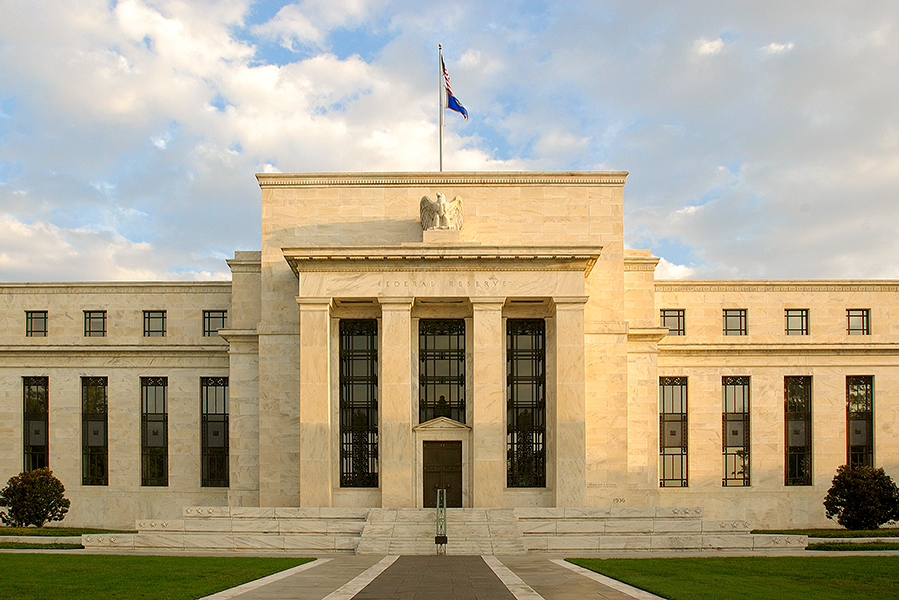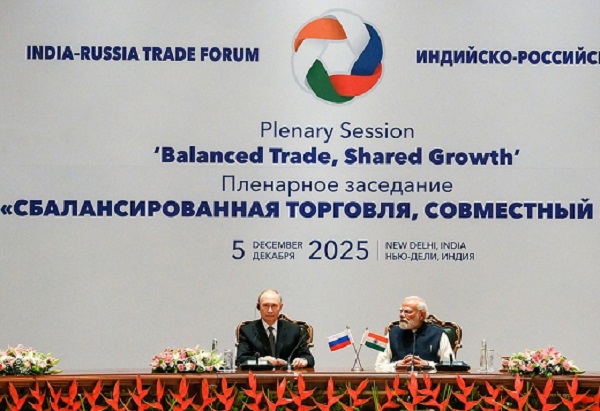.png)
Asia Stocks Slip, Gold Soars as Credit Concerns and Trade Fears Weigh on Sentiment
Here’s your quick read to start the day: a chatty, no-fuss look at overnight moves, the big story, what’s on the docket, and the tickers you need to watch.

October 17, 2025 at 1:31 AM IST
GLOBAL MOOD: Risk-off
Asian markets turned risk-off Friday as US bank loan losses and renewed trade frictions hit sentiment. Safe-haven demand surged, lifting gold to record highs and driving Treasury yields and the dollar lower amid deepening global caution.
TODAY’S WATCHLIST
- RIL, JSW Steel Earnings
- Fed Miran Speech
THE BIG STORY
Separately, the US Treasury Department reported the budget deficit narrowed to $1.775 trillion in fiscal 2025, down $41 billion from the previous year the first decline since 2022. The improvement came as tariff revenues rose and education spending fell, offsetting higher costs for healthcare, retirement, and interest payments. The data suggest a modest fiscal reprieve amid ongoing economic uncertainty and political gridlock.
Data Spotlight
Crude oil inventories rose by 3.52 million barrels last week, far exceeding forecasts of a marginal build, signalling weaker demand and contributing to downward pressure on oil prices. In US housing, the NAHB/Wells Fargo Housing Market Index climbed to 37 in October, the highest in six months, supported by lower mortgage rates and improved sales expectations. Economists at JPMorgan and Goldman Sachs estimated that initial jobless claims fell to 217,000 for the week ending October 11, down from 235,000 in the prior week. The drop suggests layoffs remain low, signalling some underlying resilience despite broader economic uncertainty.
Meanwhile, the New York Fed’s general business activity index slumped to -23.6, it’s lowest since January 2021, underscoring a sharp slowdown in regional activity. The accompanying business climate index at -42.9 indicated conditions remain well below normal, with employment edging down and wage growth subdued.
Takeaway:
WHAT HAPPENED OVERNIGHT
- US Stocks fell as regional bank losses and trade tensions rattled sentiment
- US stocks declined on Thursday led by regional banks after Zions Bancorporation plunged 13% on rising loan losses.
- Western Alliance fell 10.8% amid a fraud-related lawsuit.
- Credit quality concerns weighed on financials, amplifying broader market risk aversion.
- Ongoing US-China trade tensions deepened after President Trump warned, “We’re in a trade war now,” dampening investor confidence.
- US stocks declined on Thursday led by regional banks after Zions Bancorporation plunged 13% on rising loan losses.
- US Treasury yields fell as weak data and trade tensions spurred safe-haven demand
- The 10-year US Treasury yield declined 6.9 bps to 3.98%, slipping below the key 4% level amid risk-off sentiment.
- The 2-year yield fell to its lowest in over three years, reflecting rising bets on further Fed rate cuts.
- The Philadelphia Fed Manufacturing Index plunged 36 points to –12.8, well below forecasts, signalling a sharp slowdown in factory activity.
- Mounting US-China trade tensions and credit market worries drove investors into safer assets.
- The 10-year US Treasury yield declined 6.9 bps to 3.98%, slipping below the key 4% level amid risk-off sentiment.
- US Dollar weakened amid trade and policy uncertainty
- The dollar index fell to 98.5, marking its third consecutive daily decline.
- Selling pressure stemmed from escalating US-China trade tensions and uncertainty ahead of the Trump–Xi meeting in South Korea.
- The prolonged US government shutdown and delayed economic data further eroded confidence in the greenback.
- The dollar index fell to 98.5, marking its third consecutive daily decline.
- Crude oil prices fell over 1% as peace talks raised supply uncertainty
- Brent crude oil prices dropped 1.37% to $61.06 per barrel, while US WTI crude futures declined 1.39% to $57.46 per barrel, both multi-month low.
- Prices weakened after President Donald Trump announced plans to meet Russian President Putin in Hungary to discuss on Ukraine war, raising hopes of easing geopolitical tensions.
- The prospect of renewed Russian oil exports added to supply concerns, overshadowing recent OPEC+ output restraint and keeping traders cautious.
- Brent crude oil prices dropped 1.37% to $61.06 per barrel, while US WTI crude futures declined 1.39% to $57.46 per barrel, both multi-month low.
Day’s Ledger
Economic Data
- Euro Sep CPI
- India Credit-Deposit Growth
- India Foreign Exchange Reserves
- India M3 Money Supply
- US Sep Housing Starts
Corporate Actions
- Jul-Sep Earnings: AU Small Finance Bank, Bank of India, Dixon Tech, Havells, Hind Zinc, JSW Energy, JSW Steel, Oracle Financial, Polycab India, REC, RIL, Tata Tech
- Geekay Wires to consider stock split
Policy Events
- Fed Miran Speech
- Fed Kashkari Speech
- BoJ Uchida Speech
- BoE Pill Speech
- Fed Musalem Speech
- BoE Breeden Speech
TICKERS TO WATCH
- WIPRO Q2 net profit up 1%, revenue rises 1.7% on large deal wins
- INFOSYS Q2 profit rises 13% to ₹7,364 cr as large deals boost outlook
- ZEE ENTERTAINMENT Q2 profit down 63.4% at ₹76.5 cr, revenue falls 2%
- OLA ELECTRIC enters $12 bn energy storage market with home batteries
- SOUTH INDIAN BANK Q2 net profit rises 8% to ₹351 cr, interest margin dips
- METRO BRANDS misses profit estimates as demand weakens before tax cuts
- SUNTECK REALTY's Q2 profit jumps 41% amid improved operating efficiency
- Real estate developer KALPATARU's Q2FY26 pre-sales grow 19% to ₹1,329 cr
- JSW INFRASTRUCTURE Q2 profit dips 2.8% to ₹361 crore; revenue rises 26%
- COCHIN SHIPYARD to launch 3 vessels including Anti-Submarine craft for Navy
MUST READ
- Donald Trump, Vladimir Putin to speak before Zelenskiy's White House visit
- Not aware of any discussion between PM Modi, Trump on Oct 15: MEA
- SEBI aims to boost institutional participation in commodity markets
- India must fire on all cylinders to reach 8% growth goal: IMF's Srinivasan
- Lagarde Says ECB Is Well Placed to Tackle Future Shocks
- ECB’s Rehn Sees Two-Sided Risks to Europe’s Inflation Outlook
- German Economy Is Struggling to Shake Off Slump, Bundesbank Says
- Shutdown Leaves Fed in Dark on Data as It Weighs Next Rate Move
- Crypto Without Clarity: India’s Risk of Leading From the Shadows
Afghanistan Standoff: The Shifting Sands Of Pakistan’s Strategic Depth - India’s Banking Future Lies in Embracing Foreign Capital
See you tomorrow with another edition of The Morning Edge.
Have a great trading day.
Genome Editing: A Quiet Revolution in Indian Rice Fields
India’s rice revolution is happening quietly, not in trade talks, but in labs and fields.
G. Chandrashekhar writes, scientists are using genome editing, not GM modification, to create rice varieties that yield more, mature faster, and use less water and fertiliser. Early field results from DRR Dhan 100 and Pusa DST 1 are promising.
Can genome-edited rice reshape India’s food security without triggering the old GMO fears? Will this technology finally bridge India’s yield gap and climate challenge?
And is India ready to lead in agri-innovation through science that edits — not imports — the future?



